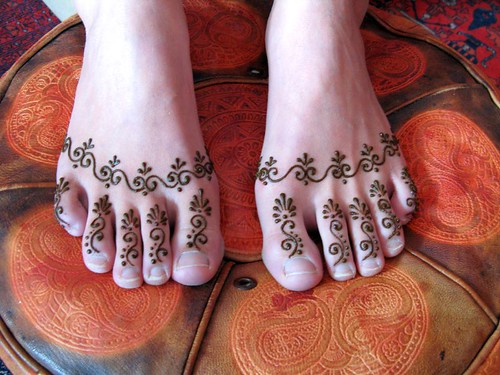
Henna paste, used to dye hair, skin and fabrics for centuries, is made from a plant called Mignonette tree. The scientific name is Lawsonia inermis. The leaves themselves will not stain, but when crushed or ground and treated with a mildly acidic liquid, the lawsone particles are released and can bind to the proteins of the skin when applied. This creates the henna stain, which is orange at first but turns to a darker reddish brown.

Lemon juice or tea is acidic enough to mix with the henna, so it really can be all-natural. This doesn't stop people from adding chemicals and selling it pre-mixed, so be diligent in finding out where your henna comes from and what ingredients it contains. Sometimes essential oils are combined with the mixture to add benefits of scent or longer lasting stain, but these are usually safe.

The longer the henna paste is left on the skin, the darker the stain will be. As it dries you can dab a mixture of lemon juice and sugar on the application to lengthen the time the paste will stay adhered to the skin. Hands and feet generally stain the darkest.

I had my first henna experience on Wednesday night, as my dance teacher decided to invite a henna artist to our hafla. She was so quick, within 5 minutes I had a beautiful piece of art above my hip. It didn't hurt or tickle or irritate my skin at all - but I did have to be careful of smudging it. The henna dried in about a half hour.
This is the henna after it dried, before I took it off. If it had been earlier in the day I would have kept it damp with lemon and sugar but I wanted to go to sleep! It came off easily enough. Apparently I will have my temporary tattoo for a couple weeks!
Have you gotten henna before? What do you like about it?


I LOVE henna! What do I love about it? Well, it's just so beautiful when done by an artist. Having a henna tattoo makes me feel more like a dancer. I love the smell of it, too.
ReplyDeleteIn fact, the only things I don't like about it is the difficulty of not smudging it, and the fact that it fades away!